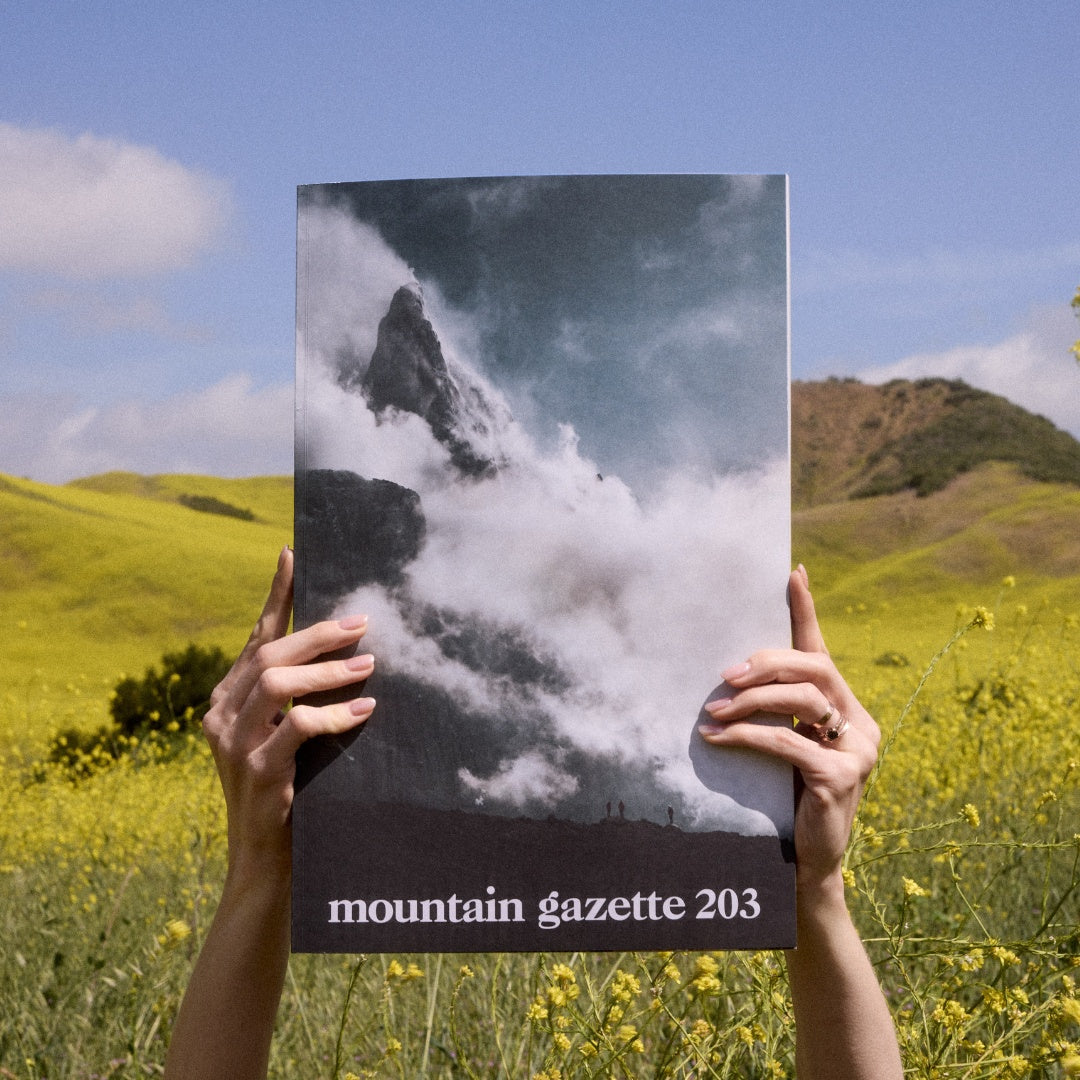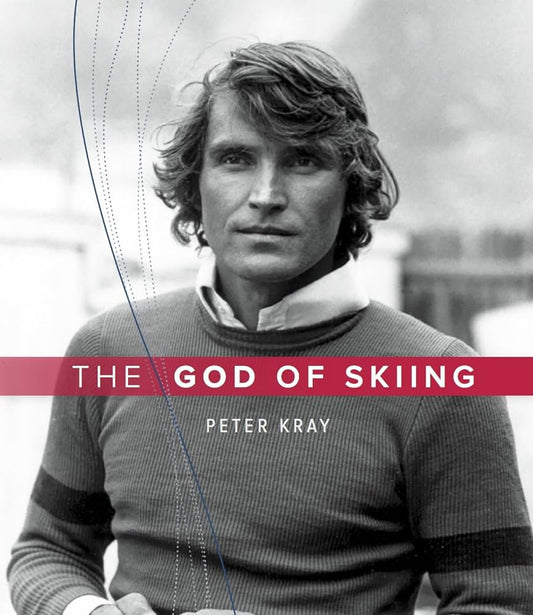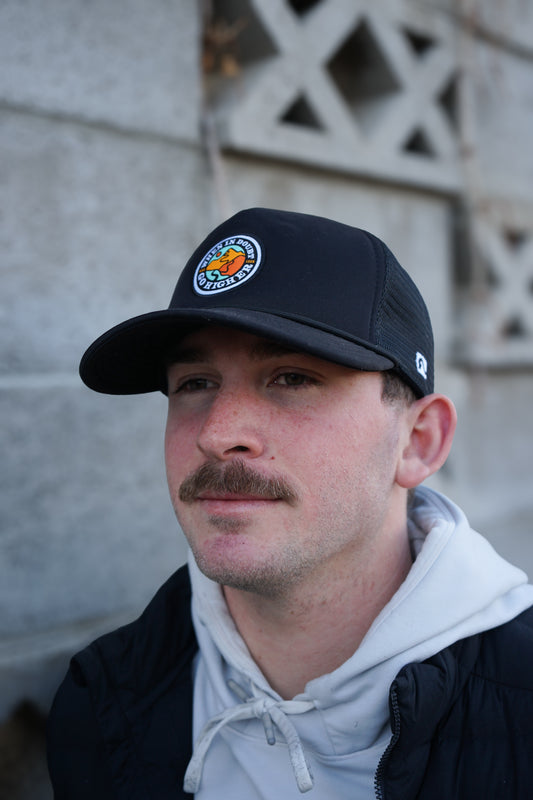
By Hannah Truby
We arrive at camp just before sunup, a trailhead pull-off of gravel and sagebrush 20 miles north of Reno. In the early light, Kilian Jornet’s crew spills out of two RVs, greeting us as they ready a custom-orange Trek bike. They fit it with Jornet’s water bottle—mixed with cherry juice for electrolytes and flavor, because, as his NNormal-appointed assistant and co-pilot Preston explains, he’s “not a fan of the taste of American tap water.”
Jornet and his team are in the midst of his latest endeavor: States of Elevation, a personal project in partnership with his brand NNormal. Described as “a human-powered journey,” the project sees Jornet summiting all 72 14ers—peaks in the western U.S. with elevations of at least 14,000 feet—and connecting them all by foot and bike. It’s a feat that will have him reaching as many as a dozen summits in a single day, only to turn around and ride 50 miles by bike. In total, Jornet will run, hike, and climb more than 600 miles, stacking up over 400,000 feet of vert, while bicycling (mostly on gravel roads) an additional 2,400 miles. (For reference, this year’s Tour de France covered roughly 2,100 miles.)
It would be an exaggeration to call Jornet superhuman—but only marginally. His resting heartbeat is 41 BPM. His lungs register an exceptionally high VO₂ max of 92 ml/kg/min, one of the highest ever recorded. And, during the States of Elevation project, he has been completing 16-hour days at high altitudes on an average of just three to four hours of sleep per night.
His reputation is such that, when he steps out of the RV and makes his way over to our group, I am struck at how small the man is. At 5-foot-6 and 128 pounds, he and I are eye-to-eye. Under his helmet, his face glows honeyed and sun-worn—a ledger of the days prior. Because he has next-to-zero body fat, his top half is bundled in a lightweight jacket layered beneath a puffer, which he will shed at the first checkpoint once his body warms.


Jornet has just completed 70 of the 14ers, all but two of which lie within the Sierra Nevada and Colorado—where his first major challenge was Norman’s 13, a stage he has since called his favorite of the project so far and one on which he set the new supported fastest known time (FKT), knocking out a lifetime achievement for many alpinists in a shocking 56 hours, 11 minutes, and 4 seconds and racking up 101 miles, 38,400 vertical, and 13 14,000-foot summits. Today, he will spend 14 hours in the saddle en route to Mount Shasta, covering 178 miles. After that, he’ll make the final push north 490 miles to Mount Rainier.

We ask politely—albeit uncreatively—“How are you?” He says he slept a rare seven hours last night and tells us he is feeling “good, very good.”
There’s a recurring question in endurance sport circles: Is the ultrarunner’s engine born, or built? Was Kilian Jornet born with an engine built for herculean feats—or was it fostered in childhood, in a backcountry mountain hut, with the Pyrenees as his playground? The age-old debate—nature or nurture, talent or training—has rarely found a subject as compelling as him.
Jornet has spent his life roaming mountains. It is a passion that borders on obsession, and no human has more effectively mastered the various ways to traverse them.
While other children his age were learning to walk, Jornet was on skis. By age three, he had climbed several peaks and crossed the Pyrenees by 10. It was clear early on that, whether by gene or environment or otherwise, Jornet was something entirely apart.
"I want to count lakes when I grow up. I want to be a counter of lakes!"
In his autobiography, Run or Die, Jornet reflects on the aspirations of his five-year-old self. Beyond the pure curiosity typical of children, there has always been for Jornet a deeper significance—not simply counting or measuring the world, but experiencing it.
Such is the guiding philosophy behind States of Elevation.

Jornet is considered one of the greatest mountain endurance athletes in history. Beyond winning the most challenging mountain ultramarathons in the world—often multiple times—he has also set records on routes that very few have attempted, including the Matterhorn and Mont Blanc, and has set fastest-known times while linking summits from the Pyrenean ridges to Everest and the Rockies.
In 2008, at just 20, Jornet won his debut Ultra-Trail du Mont-Blanc (UTMB) nearly an hour ahead of the runner-up, sparking unsubstantiated cheating rumors that reflected the incredulity his feats often inspire.
This past June, after a 14-year hiatus, Jornet finished third in the Western States 100-Mile Endurance Run with a time of 14 hours, 19 minutes, and 22 seconds—over an hour faster than his winning time in 2011.
But States of Elevation is not about records or FKTs, even though he continues to set them.
Jornet sits at the dinette in his RV, placing squares of cheese onto avocado toast—his snack between checkpoints. “You’ve said States of Elevation isn’t about setting records. How do you define success for this project?” I ask.
“Well,” he says, “the success is the journey.”
What I am learning is that Jornet is less a conventional athlete, but something more than a competitor; what he pursues is a lifelong dialogue with nature, his body serving as the transmitter.
“At a race like Western States, you mostly run quickly for 14 hours, so it really has nothing to do with this,” he says. “Instead, I can look at my entire career and what I have done in the mountains since I was 14 years old. That is what has prepared me.”


The project builds on his previous endurance challenges, including Alpine Connections and Pyrenees 3000, where he linked high-altitude summits in Europe. But beyond physical effort, States of Elevation is a reflection of Jornet’s ongoing pursuit of meaning through endurance, nature, and exploration.
With the excuse of linking the 14ers, the idea for States of Elevation actually grew from Jornet’s deeper desire to explore the American West. As such, he prioritizes the aesthetics and experience of the route over simply choosing the fastest path to link the peak.

“It’s to have a pace that I can get a sense of the landscapes that I’m traversing.”
Of course, for a project of this scale, gear has to perform, and States of Elevation offers NNormal a high-profile platform to showcase it, while also serving as a real-world testing ground for upcoming prototypes. Every kilometer not only advances Jornet’s journey but also helps the brand refine solutions for the broader running and outdoor community.

Later, on the road, our convoy of two RVs and a van trails Jornet through three checkpoints on his way to Mount Shasta. We drive ahead and wait for him at each stop, where he breaks for a snack. For this project, Jornet sticks to a mostly whole-food, vegetarian diet, but sweet treats–like donuts– still have a place in his daily fuel. He answers our questions in between bites. He is calm, polite, almost unnervingly unhurried—hardly winded at all. After about fifteen minutes, he snaps his helmet back on, swings onto the bike, and waves off with a simple, “See you soon.”
On foot, Jornet usually listens to nothing but the wind and his footsteps. On the bike, his audio rotates between sports science podcasts, audiobooks, and music—though every so often it switches to Norwegian children’s songs, favorites of his daughters.
I marvel at the intimacy of it all: Here he is, the world’s best mountain ultra-runner, accomplishing yet another incomprehensible and epic feat—unfolding in near-total isolation. Cars drive past him on Highway 89, completely unaware of the extraordinary endeavor taking place just outside their windows.



“And has it been everything you kind of thought it would be a year ago when you were planning this?” I ask him.
“I didn’t create any expectations,” he says. “With time, I’ve learned not to anticipate. If you try to anticipate, you’re always chasing something that might never arrive. I set the route, organize logistics, and then just learn and experience.”
We part ways with Jornet as he sets out on his final stretch of the day, the push to the base of Mount Shasta.
The following day, he would stand on the summit of Mount Shasta, fourteener number 71, “battling what he called top three craziest wind I’ve ever had on a mountain, with summit temps that felt like -20°C (–4°F),” according to his Strava post. “The climb delivered fresh snow and a good reminder to not let his guard down, even this far in the project. But there was barely a pause at the top. As soon as the summit was behind him, Kilian was back on the bike and rolling north again, this time pushing for Oregon and Washington.’”
At last came Mount Rainier, demanding over 17 hours—47 km (29 miles) traversed, 4,356 m (14,320 ft) climbed—but ultimately yielding to Jornet. With that summit, and after 31 days on the road and in the mountains, States of Elevation was complete.
See the full breakdown of Jornet’s stats here.










